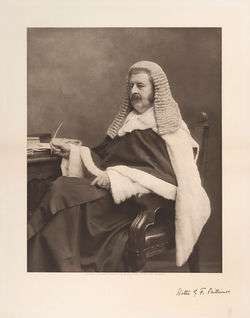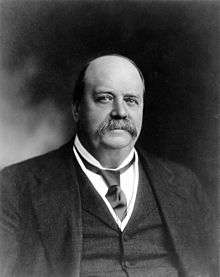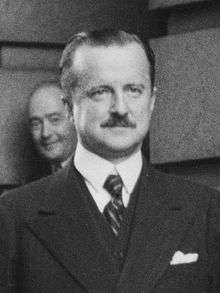Westminster St George's (UK Parliament constituency)
| Westminster St George's | |
|---|---|
|
Former Borough constituency for the House of Commons | |
| County | County of London |
| 1885–1950 | |
| Number of members | One |
| Replaced by | Cities of London and Westminster |
| Created from | Westminster |
Westminster St George's, originally named St George's, Hanover Square, was a parliamentary constituency in Central London. It returned one Member of Parliament (MP) to the House of Commons of the Parliament of the United Kingdom, elected by the first past the post system of election.
History
The constituency was created under the Redistribution of Seats Act 1885, and was then named "St George Hanover Square" after the parish of the same name.
It was renamed in 1918 as "Westminster St George's", and abolished in 1950.
Boundaries



1885-1918
From 1885 to 1918, when the constituency was known as St George Hanover Square, it was defined as being coterminus with the civil parish of the same name.[1] In 1900 the parish was included for local government purposes in the area of the Metropolitan Borough of Westminster. This did not affect the name or boundaries of the constituency until 1918.[2]
1918-1950
The Boundary Commission report of 1918 (Cd. 8756), at Schedule-Part II no. 78, defined the constituency as the following wards of the Metropolitan Borough of Westminster:
- Conduit: A small ward running from the top of Regent Street down through Hanover Square, the eastern side of Berkeley Square, and down to the Ritz on Piccadilly.
- Grosvenor: Covering the whole of Mayfair and the northern half of Hyde Park.
- Hamlet of Knightsbridge: The southern half of Hyde Park, together with Knightsbridge and part of the museums area north of South Kensington including the Royal Albert Hall.
- Knightsbridge St. George's: The area of Belgravia.
- Victoria: A very large ward running from Buckingham Palace south to include Victoria Station, and Pimlico.
The constituency also included "the part of the Charing Cross Ward which lies to the south and west of a line drawn from the ward boundary at the centre of Wellington Arch, along the middle of Constitution Hill, thence along the middle of the road to the north and east of the Queen Victoria Memorial, thence along the middle of Spur Road to boundary of St. Margaret Ward". This area included the remainder of the grounds of Buckingham Palace which were not in the Victoria Ward, but contained no electors. The boundary commissioners proposals were enacted by Schedule 9 of the Representation of the People Act 1918.
Members of Parliament
Elections
Elections in the 1880s

| Party | Candidate | Votes | % | ± | |
|---|---|---|---|---|---|
| Conservative | Lord Algernon Percy | 5,256 | 67.7 | ||
| Liberal | Walter Phillimore | 2,503 | 32.3 | ||
| Majority | 2,753 | 35.4 | |||
| Turnout | 7,759 | 73.9 | |||
| Conservative win | |||||
- General election of 1886
In the 1886 general election, Lord Algernon Percy, Conservative was elected unopposed.

| Party | Candidate | Votes | % | ± | |
|---|---|---|---|---|---|
| Liberal Unionist | George Goschen | 5,702 | 78.7 | ||
| Liberal | James Haysman | 1,545 | 21.3 | ||
| Majority | 4,157 | 57.4 | |||
| Turnout | 7,247 | 65.4 | |||
| Liberal Unionist hold | Swing | ||||
Elections in the 1890s
- General election of 1892
In the 1892 general election, George Goschen, Liberal Unionist was elected unopposed.
- By-election of 1895
In the 1895 by-election, George Goschen, Conservative was elected unopposed.
- General election of 1895
In the 1895 general election, George Goschen, Conservative was elected unopposed.
Elections in the 1900s
| Party | Candidate | Votes | % | ± | |
|---|---|---|---|---|---|
| Conservative | Heneage Legge | 3,852 | 75.1 | ||
| Liberal | William Everitt | 1,278 | 24.9 | ||
| Majority | 2,574 | 50.2 | |||
| Turnout | 5,130 | 52.6 | |||
| Conservative hold | Swing | ||||
| Party | Candidate | Votes | % | ± | |
|---|---|---|---|---|---|
| Conservative | Heneage Legge | 4,264 | 66.1 | ||
| Liberal | Manmath Chandra Mallik | 2,191 | 33.9 | ||
| Majority | 2,073 | 32.2 | |||
| Turnout | 6,455 | 69.0 | |||
| Conservative hold | Swing | ||||
- By-election of 1906
In the 1906 by-election, Alfred Lyttelton, Liberal Unionist was elected unopposed.
Elections in the 1910s

| Party | Candidate | Votes | % | ± | |
|---|---|---|---|---|---|
| Liberal Unionist | Alfred Lyttelton | 5,383 | 78.6 | ||
| Liberal | Mackenzie Bell | 1,469 | 21.4 | ||
| Majority | 3,914 | 57.2 | |||
| Turnout | 6,852 | 76.5 | |||
| Liberal Unionist hold | Swing | ||||

| Party | Candidate | Votes | % | ± | |
|---|---|---|---|---|---|
| Liberal Unionist | Alfred Lyttelton | 4,398 | 78.7 | ||
| Liberal | Mackenzie Bell | 1,188 | 21.3 | ||
| Majority | 3,210 | 57.4 | |||
| Turnout | 5,586 | 62.4 | |||
| Liberal Unionist hold | Swing | ||||
- By-election of 1913
In the 1913 by-election, Alexander Henderson, Unionist was elected unopposed.
- By-election of 1916
In the 1916 by-election, George Reid, Unionist was elected unopposed.

- By-election of 1918
In the 1918 by-election, Newton Moore, Unionist was elected unopposed.
| Party | Candidate | Votes | % | ± | |
|---|---|---|---|---|---|
| Unionist | 10,453 | 90.2 | |||
| Liberal | Mackenzie Bell | 1,140 | 9.8 | ||
| Majority | 9,313 | 80.4 | |||
| Turnout | 11,593 | 39.9 | |||
| Unionist hold | Swing | ||||
- endorsed by Coalition Government
Elections in the 1920s
| Party | Candidate | Votes | % | ± | |
|---|---|---|---|---|---|
| Anti-Waste League | James Erskine | 7,244 | 57.5 | N/A | |
| Unionist | 5,356 | 42.5 | -47.7 | ||
| Majority | 1,888 | 15.0 | |||
| Turnout | 12,600 | 39.8 | |||
| Anti-Waste League gain from Unionist | Swing | N/A | |||
- endorsed by Coalition Government

| Party | Candidate | Votes | % | ± | |
|---|---|---|---|---|---|
| Independent Unionist | James Erskine | 11,252 | 55.9 | ||
| Unionist | Leslie Orme Wilson | 7,559 | 37.6 | ||
| Liberal | Mary Sophia Allen | 1,303 | 6.5 | ||
| Majority | 3,693 | 18.3 | |||
| Turnout | 20,114 | 62.2 | |||
| Independent Unionist hold | Swing | ||||
- General election of 1923
In the 1923 general election, James Erskine, now an official Unionist, was elected unopposed.
- General election of 1924
In the 1924 general election, James Erskine, Unionist was elected unopposed.

| Party | Candidate | Votes | % | ± | |
|---|---|---|---|---|---|
| Unionist | Laming Worthington-Evans | 22,448 | 78.1 | n/a | |
| Labour | Joseph George Butler | 6,294 | 21.9 | n/a | |
| Majority | 16,154 | 56.2 | n/a | ||
| Turnout | 28,742 | 53.3 | n/a | ||
| Unionist hold | Swing | n/a | |||
Elections in the 1930s
| Party | Candidate | Votes | % | ± | |
|---|---|---|---|---|---|
| Conservative | Duff Cooper | 17,242 | 59.9 | -18.2 | |
| Independent Conservative | Ernest Petter | 11,532 | 40.1 | n/a | |
| Majority | 5,710 | 19.8 | -36.4 | ||
| Turnout | 28,774 | 53.1 | -0.2 | ||
| Conservative hold | Swing | n/a | |||
- General election of 1931
In the 1931 general election, Duff Cooper, Conservative was elected unopposed.

| Party | Candidate | Votes | % | ± | |
|---|---|---|---|---|---|
| Conservative | Duff Cooper | 25,424 | 84.6 | ||
| Labour | Anne Freemantle | 4,643 | 15.4 | ||
| Majority | 20,781 | 69.2 | |||
| Turnout | 30,067 | 55.2 | |||
| Conservative hold | Swing | ||||
Elections in the 1940s
| Party | Candidate | Votes | % | ± | |
|---|---|---|---|---|---|
| Conservative | Arthur Howard | 13,086 | 67.2 | -17.4 | |
| Common Wealth | Wilfred Brown | 5,314 | 27.3 | n/a | |
| Independent | Dorothy Crisp | 1,069 | 5.5 | n/a | |
| Majority | 7,772 | 39.9 | -29.3 | ||
| Turnout | 19,469 | 57.2 | +2.0 | ||
| Conservative hold | Swing | n/a | |||
References
- Leigh Rayment's Historical List of MPs – Constituencies beginning with "S" (part 1)
- F. W. S. Craig, British Parliamentary Election Results 1885 - 1918
- F. W. S. Craig, British Parliamentary Election Results 1918 - 1949